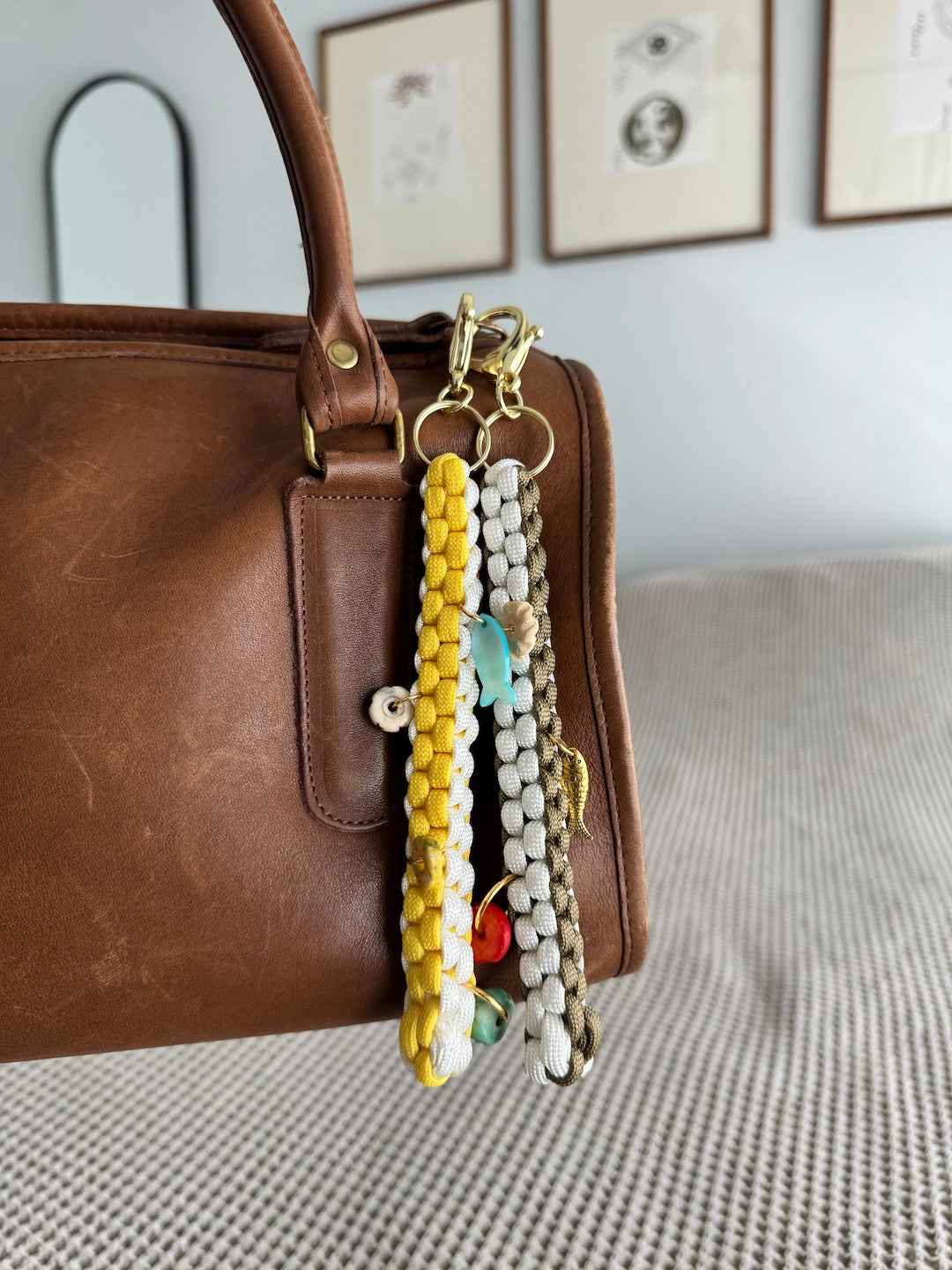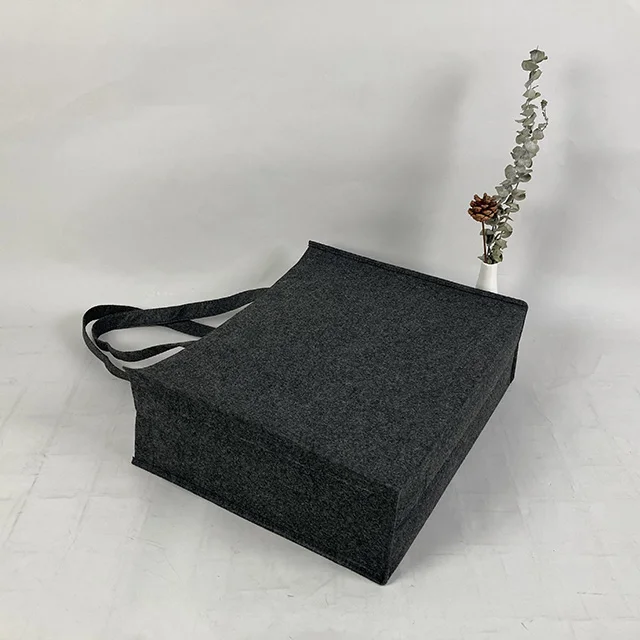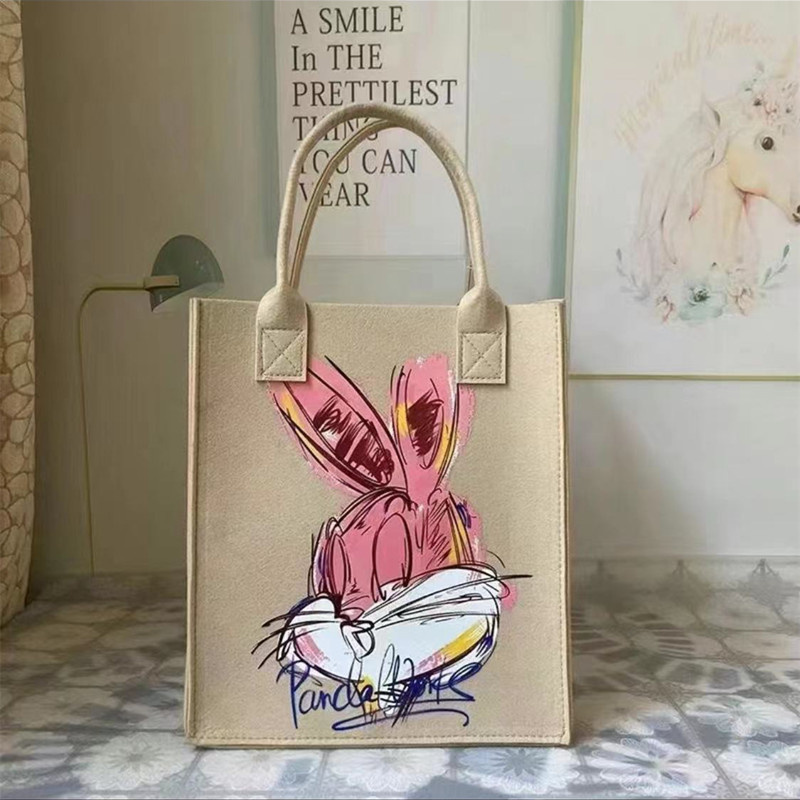Felt is a durable, lightweight, and stylish non-woven fabric made by matting fibers, making it an excellent material for structured and protective custom bags. Its unique construction offers a modern aesthetic while providing impressive resilience for daily use, merging functionality with contemporary design in a way few other textiles can. This material is not just for crafts; it is a sophisticated choice for high-quality, bespoke accessories.


What Exactly is Felt and Why is it Ideal for Bags?
Unlike woven fabrics, which are created by interlacing threads on a loom, felt is a dense, non-woven textile. Its creation is one of the oldest textile-making techniques known to humankind, predating both weaving and knitting. The unique properties that result from this process make it a standout candidate for modern accessories, especially custom bags that require both form and function.

The Ancient Art of Matting Fibers
Felt is produced by applying a combination of moisture, heat, and pressure to natural or synthetic fibers. This process, known as felting, causes the microscopic scales on the surface of the fibers to interlock and mat together, forming a single, inseparable sheet of fabric. Because there is no weave or thread, felt has clean, raw edges that will not fray or unravel when cut. This characteristic alone makes it exceptionally versatile for creative bag designs and intricate detailing without the need for hemming.
Key Properties That Make Felt a Superior Choice
The appeal of felt for custom bags goes far beyond its production method. The material boasts a combination of inherent qualities that make it both practical and aesthetically pleasing. Its dense structure provides excellent shock absorption, making it a perfect material for laptop sleeves, camera bag inserts, and protective pouches. Furthermore, it is remarkably lightweight for its thickness, reducing the overall weight of a bag without sacrificing sturdiness. The soft yet firm texture offers a comfortable feel while maintaining its shape, ensuring a tote or satchel looks structured and polished even when not fully packed.
Navigating the Different Types of Felt Fabric
When considering felt for a custom bag, understanding the different types available is crucial. The material composition directly impacts the bag’s durability, feel, and overall quality. From luxurious natural wool to resilient synthetic options, each type serves a distinct purpose.
The Premium Standard: 100% Wool Felt
Considered the highest quality, 100% wool felt (often made from Merino wool) is renowned for its exceptional softness, rich color saturation, and impressive durability. It is naturally water-resistant, wicking away moisture to protect the contents of your bag. Wool is also inherently antimicrobial and eco-friendly, as it is a renewable and biodegradable resource. For a bespoke bag that exudes sophistication and is built to last, pure wool felt is the definitive choice.
The Versatile Option: Wool Blends
Wool blend felts typically combine wool with synthetic fibers like rayon or polyester. This blend creates a material that retains some of the desirable qualities of wool—such as its soft feel and structure—while often being more affordable and resistant to pilling. A wool blend is a fantastic mid-range option that provides a great balance of performance and value, making it suitable for a wide range of custom bag projects.
Understanding Synthetic and Craft Felts
Synthetic felts are made entirely from man-made fibers such as polyester, acrylic, or rayon. While these felts are cost-effective and available in a vast array of bright colors, they lack the resilience and premium feel of their wool counterparts. Craft felt is often thinner and more prone to stretching and pilling, making it less suitable for durable, everyday bags. For high-use items, opting for a higher-grade industrial synthetic felt or a wool blend is highly recommended.
| Felt Type | Material Composition | Durability | Best For | Price Point |
|---|---|---|---|---|
| 100% Wool Felt | Natural wool fibers (e.g., Merino) | Very High | Premium totes, laptop sleeves, designer bags | $$$ |
| Wool Blend Felt | Wool and synthetic fibers (e.g., rayon) | High | Everyday bags, pouches, linings | $$ |
| Synthetic Felt | Polyester, acrylic, or other synthetics | Moderate | Decorative elements, light-use bags, crafts | $ |
The Intersection of Durability and Design in Felt Bags
The true genius of felt lies in its ability to deliver robust performance without compromising on a clean, modern aesthetic. It is a material that is as strong as it is stylish, providing a unique canvas for custom bag creation.
How Felt Provides Structure and Protection
One of felt’s most significant advantages is its inherent structure. A bag made from high-density felt will stand on its own, maintaining a crisp silhouette that looks intentional and well-crafted. This natural stiffness, combined with its cushioning properties, creates a protective shell for electronics, glasses, and other fragile items. It eliminates the need for bulky internal padding, allowing for a sleeker and more minimalist design.
At Beld Tura, we understand that exceptional design begins with exceptional materials. While we are renowned for our leatherwork, our philosophy of craftsmanship extends to selecting complementary textiles like premium wool felt for linings, sleeves, or bespoke bag creations that demand a unique combination of structure and softness. It is this commitment to material excellence that allows for true customization and a product that perfectly marries form with function.
A Lightweight Material for Everyday Comfort
Despite its dense appearance, felt is surprisingly lightweight. A large felt tote bag is significantly lighter than a leather or canvas bag of a similar size, which translates to greater comfort during daily commutes or travel. This lightness reduces strain on the shoulders and back, making felt an intelligent choice for anyone who carries their bag for extended periods. The result is a highly functional accessory that is a pleasure to carry.
Styling Custom Felt Bags: From Minimalist to Bold
Felt’s unique texture and ability to hold vibrant color make it incredibly versatile from a style perspective. It can be tailored to suit a wide range of aesthetics, from understated and professional to bright and expressive.
The Understated Elegance of Neutral Tones
Bags made from felt in neutral colors like charcoal grey, heather beige, and deep navy project an air of contemporary sophistication. This minimalist palette is incredibly popular in Scandinavian and Japanese design, emphasizing clean lines and material texture. A neutral felt bag pairs effortlessly with both professional and casual attire, serving as a chic, functional accessory that complements any wardrobe without overpowering it.
Making a Statement with Vibrant Colors
On the other end of the spectrum, felt is an excellent medium for bold color. Because the dye permeates every fiber, the color is incredibly rich and uniform. A custom bag in a striking color like crimson, cobalt blue, or emerald green can become a powerful statement piece. The matte finish of the felt keeps the color from looking garish, resulting in a look that is vibrant yet refined.
Essential Care and Maintenance for Your Felt Accessories
Proper care will ensure your felt bag remains beautiful and functional for years. While felt is a resilient material, it requires some specific maintenance to keep it in prime condition. Following a few simple steps can preserve its texture and shape.
Routine Cleaning and Spot Treatment
For general upkeep, use a lint roller or a soft-bristled brush to remove surface dust and fibers. If you encounter a spill, act quickly. Blot the area with a clean, dry cloth to absorb as much liquid as possible. For stains, use a damp cloth with a small amount of mild soap, like wool wash or gentle shampoo. Dab the stain gently—do not rub, as this can push the stain deeper into the fibers and cause pilling. Allow the area to air dry completely away from direct heat.
Addressing Pilling and Maintaining a Smooth Finish
Pilling, or the formation of small fiber balls on the surface, can occur with use, particularly with wool blends and synthetic felts. This is a natural result of friction and is easily managed. You can safely remove pills using a fabric shaver, a sweater stone, or even a clean disposable razor. Simply glide the tool gently over the surface of the felt to shave off the pills, instantly restoring its smooth, clean appearance.
Frequently Asked Questions About Felt Bags
Here are answers to some common queries regarding felt as a material for bags.
Is felt waterproof?
High-quality wool felt is naturally water-resistant due to the lanolin present in wool fibers, which repels water droplets. However, it is not fully waterproof. It can withstand light rain or minor spills, but it will become saturated if submerged or exposed to heavy precipitation. Synthetic felts offer less natural water resistance.
Does felt shrink?
Yes, wool felt can shrink if exposed to high heat and excessive agitation, such as in a washing machine or dryer. This is why it is critical to spot-clean felt items and allow them to air dry. Proper care will prevent any unwanted changes in size or shape.
Can felt bags carry heavy items?
Absolutely. High-density industrial or designer-grade felt is remarkably strong and has a high tensile strength. Bags constructed from thick, high-quality felt can comfortably carry laptops, books, and other heavy items without stretching or losing their shape, making them a reliable choice for everyday use.



